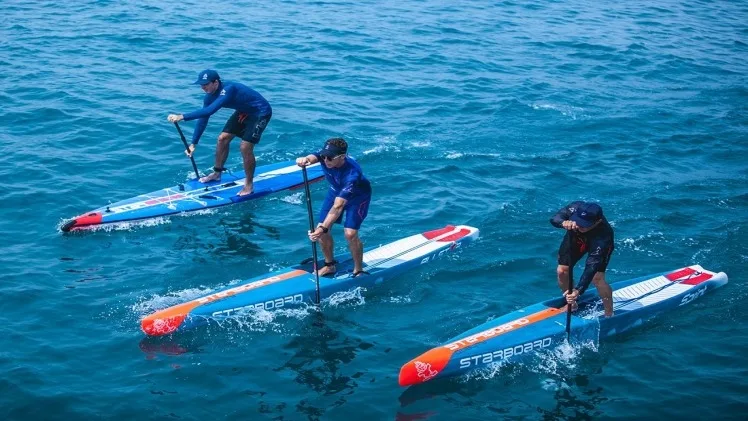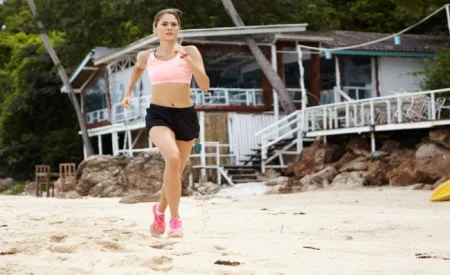Stand up paddleboarding (SUP) is a popular water sport that combines balance, strength, and tranquility. Whether you’re drawn to the idea of gliding across calm waters or seeking an exciting workout, SUP offers a versatile and accessible experience for beginners. This beginner’s guide aims to provide you with essential information and tips to get started with stand-up paddleboarding.
How to start your stand up paddleboarding journey
1. Choosing the Right Equipment:
Before diving into the world of SUP, it’s crucial to select the right equipment. A few key items you’ll need are a paddleboard, a paddle, and a personal flotation device (PFD). When choosing a paddleboard, consider your weight, skill level, and intended use. Beginners typically benefit from wider and more stable boards, such as all-around or flatwater models. Paddles should be approximately 8-10 inches taller than your height for optimal paddling efficiency.
2. Safety First:
As with any water activity, safety should be a priority. Always wear a properly fitted PFD, especially if you’re a beginner or if you’re paddling in unfamiliar or rough waters. Familiarize yourself with basic water safety guidelines, such as how to fall correctly, how to recover your board, and how to navigate different weather conditions. Additionally, it’s advisable to paddle with a buddy, especially when starting out.
3. Mastering the Basics:
Before venturing into more challenging waters, it’s essential to master the basic techniques of stand-up paddleboarding. Start in calm, flatwater areas to practice your balance and paddling strokes. Begin by kneeling on the board, finding your center of balance, and then gradually stand up while maintaining a stable stance with your feet hip-width apart. Practice your paddling strokes, such as the forward stroke, reverse stroke, and sweep stroke, to gain control and maneuverability.
4. Finding Your Balance:
Maintaining balance is a fundamental aspect of stand-up paddleboarding. To find your balance, distribute your weight evenly on the board, engage your core muscles, and keep your gaze forward, rather than looking down at your feet. Shift your weight by slightly bending your knees and using your hips to maintain stability. It’s normal to wobble or fall in the beginning, so don’t be discouraged. With practice, you’ll gradually develop better balance and stability on the water.
5. Paddling Techniques:
Proper paddling techniques are crucial for efficient movement and reducing fatigue. Hold the paddle with one hand on the top of the grip and the other hand slightly lower, about shoulder-width apart. Your arms should form a slight bend, and your shoulders should rotate as you paddle. To execute a forward stroke, insert the paddle into the water near the front of the board and pull it back, using your core and back muscles. Practice different strokes to enhance your control and maneuverability.
6. Understanding Water Conditions:
Before heading out on the water, it’s important to be aware of the prevailing water conditions. Learn to read the weather forecast, tide charts, and wind conditions. Start with calm, flatwater areas without strong currents or waves. As you gain experience, you can gradually explore more challenging environments. Always respect your limitations and don’t hesitate to ask local experts or experienced paddlers for advice on suitable locations for beginners.
7. Enjoying the Experience:
Stand-up paddleboarding isn’t just about technique and skill—it’s also about enjoying the experience and connecting with nature. Take the time to appreciate your surroundings, whether it’s a serene lake, a winding river, or the vastness of the ocean. Listen to the sounds of nature, feel the gentle rhythm of your paddle strokes, and take in the beauty that surrounds you. SUP provides a unique opportunity to relax, unwind, and find solace in the water.
The Wrap Up
Stand-up paddleboarding offers a fulfilling and rewarding experience for beginners, combining physical activity with the serenity of being on the water. By choosing the right equipment, prioritizing safety, mastering basic techniques, and gradually exploring different water conditions, you’ll embark on a journey of growth, balance, and enjoyment. Remember to be patient with yourself, practice regularly, and most importantly, have fun as you embrace the exhilarating world of stand-up paddleboarding.


